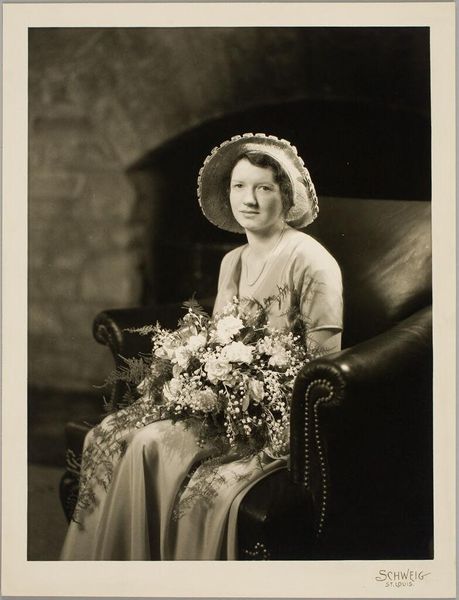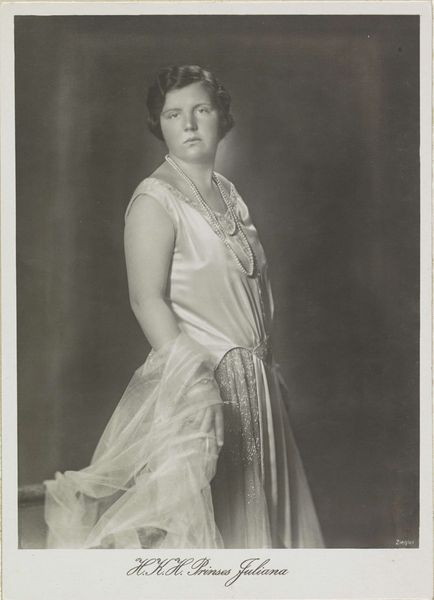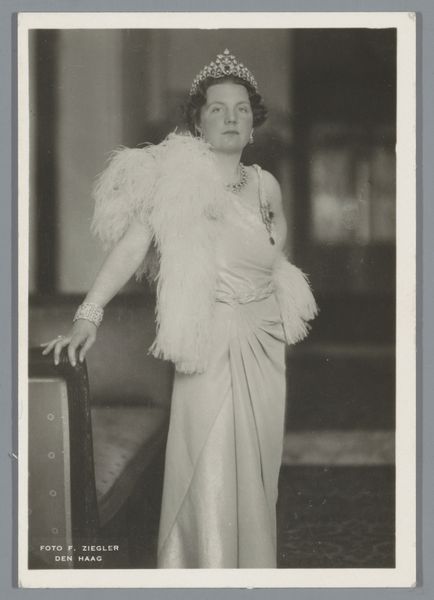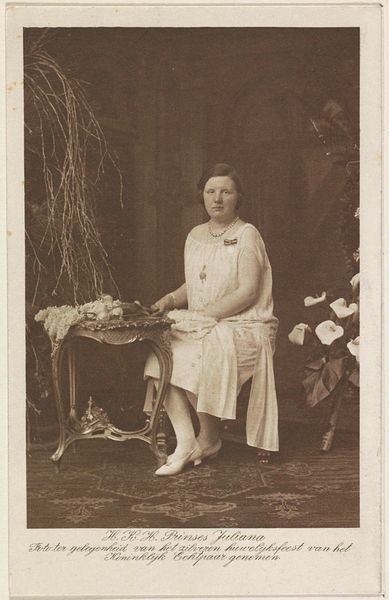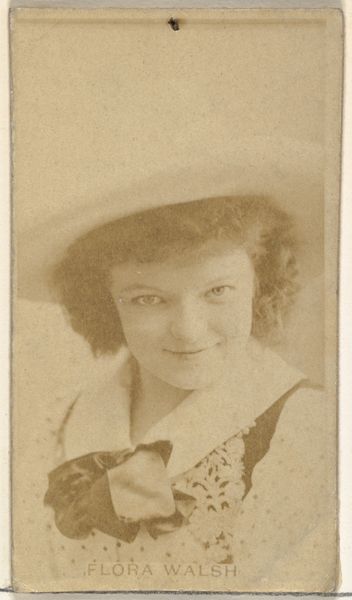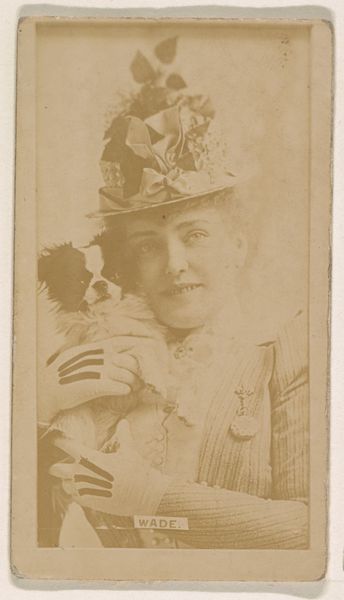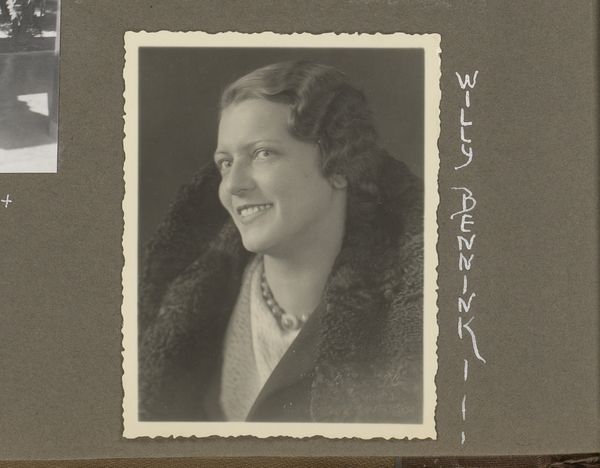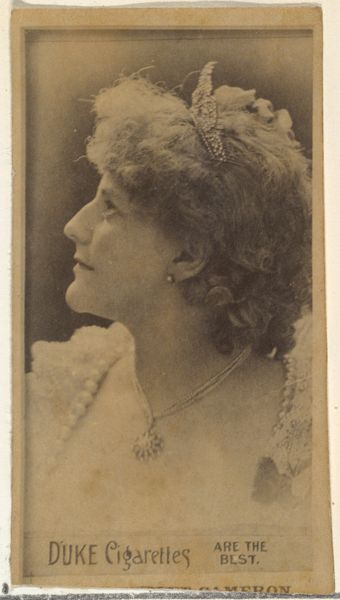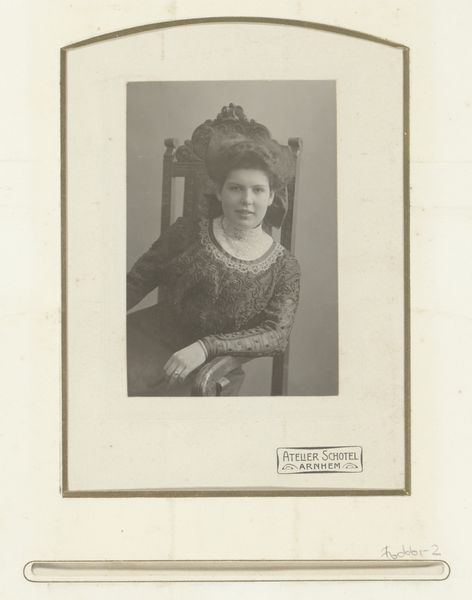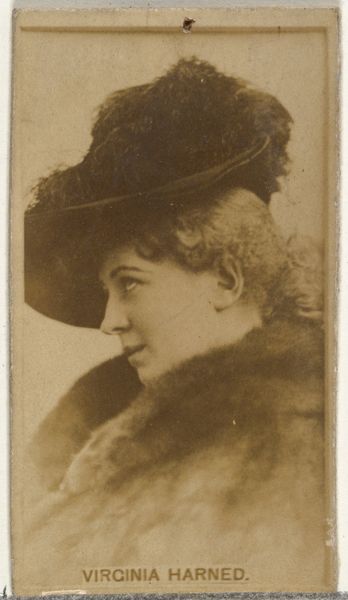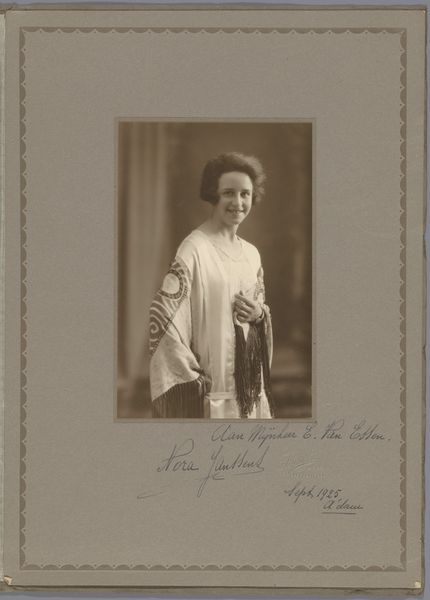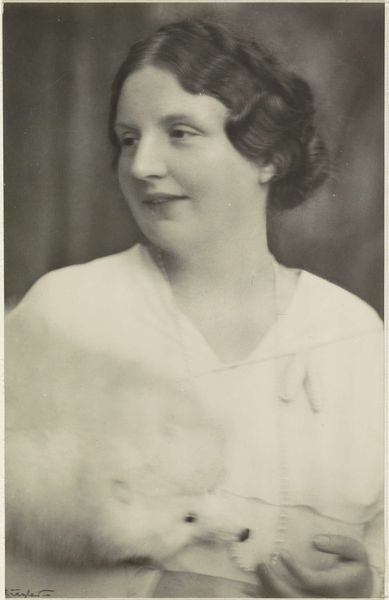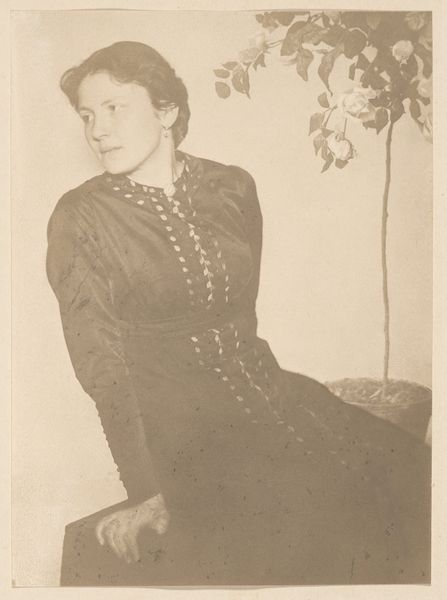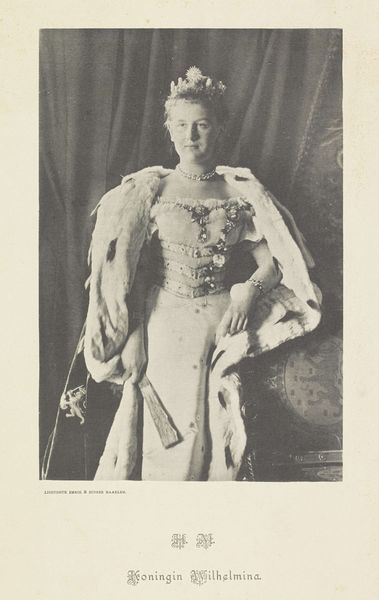
#
yellowing
#
aged paper
#
vintage
#
yellowing background
#
photo restoration
#
historical photography
#
yellow element
#
yellow and blue
#
yellow accent
#
columned text
Dimensions: height 352 mm, width 260 mm, height 588 mm, width 442 mm
Copyright: Rijks Museum: Open Domain
Editor: So, here we have a portrait of Queen Juliana of the Netherlands, possibly from 1948, taken by Harry Grubben. The photograph has definitely aged, giving it a sort of vintage feel. How do you interpret this image within the historical context of the Netherlands at that time? Curator: This portrait, likely taken shortly after the Second World War, offers us a fascinating insight into the construction of national identity. How is Juliana being presented, and what message does this convey to a nation rebuilding itself? We must ask, is this image simply a regal portrait, or does it operate on a deeper level, considering the role of women in positions of power at the time? Editor: It seems like a fairly standard portrait, right? Curator: But who defines what’s standard? If you consider the feminist discourse, representation of women in leadership positions have often had to navigate tricky terrain – appearing authoritative yet feminine, strong but approachable. Looking at her attire, her smile, the flowers—how are these choices reinforcing or challenging gendered expectations in post-war Netherlands? And to what extent are we as viewers implicated in perpetuating, or subverting these ideas? Editor: I see what you mean. It’s more complex than just a nice picture of the queen. The context of post-war rebuilding and shifting gender roles gives it a whole new dimension. Curator: Exactly! This isn’t just about aesthetics; it's about power, representation, and the intricate dance between identity and societal expectations. By understanding the period’s political and social environment we are invited to interrogate the image, as well as the society, that produced it. Editor: That really changed how I see this photo. It’s not just a historical image, but a document reflecting the complexities of its time. Curator: Precisely. Analyzing art is about placing it within its historical narrative to interpret its meaning, beyond what the eye perceives at first glance.
Comments
No comments
Be the first to comment and join the conversation on the ultimate creative platform.
